It's easy to assume that our students know how to tell the difference between things that are dirty and things that are clean. However, as I learned the hard way, this is not always the case! In this blog post, I'll share with you my story of an embarrassing teaching moment and what I learned from it. Hopefully, you can avoid making the same mistake I did.
One of my worst teaching moments happened when I was cleaning up after lunch. I grabbed a plate out of our class cupboard and was about to put it away when I realized that it was dirty.
Not just a little bit dirty - this plate was full on DIRTY!
There was food all over it, and it was clear that it had not been washed.
I suddenly realized that one of my sweet students (who works so hard!) must not know the difference between dirty and clean.
Just a few days before, I had assigned her the classroom chore of unloading and loading the dishwasher.
While I had taken the time to show her how to unload and load the dishes, I had just assumed she could tell the difference between things that were dirty/clean. We all know what assuming does ;), so don’t make the same mistake I did!

How to Teach Your Students the Difference Between Dirty and Clean
Just like every other skill, our students require systematic instruction on how to tell if something is dirty or clean.
Here are a few tips on how you can do this in your classroom:
1. Model, model, model! Whenever you are making lunch or cleaning up after a meal, take the time to point out what makes something dirty (e.g., there is food on this plate) and what you need to do to clean it (e.g., put it in the dishwasher).
2. Give your students opportunities to practice identifying dirty vs. clean items. You can use our core vocabulary set on Dirty of Clean.
3. Help your students brainstorm solutions for when they can't tell if something is dirty or clean (e..g., ask an adult). This is especially important for those times when there isn't a clear answer (e...g., there is one tiny speck of food on a plate).

As teachers, we often assume that our students know more than they actually do. This can lead to embarrassing situations like the one I described above.
To avoid these situations, take some time to explicitly teach your students how to tell if something is dirty or clean.
With some modeling and practice, they'll be experts in no time!


